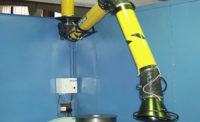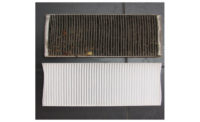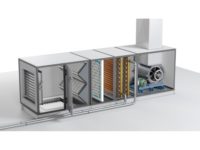In many enterprises, there is a problem of rapid failure of stainless steel fans that operate in corrosive gases. This problem is especially relevant in electroplating industries, chemical workshops, and large industrial laboratories.
Industrial ventilation equipment must be designed to meet a variety of operating and environmental conditions. Many fans are used to exhaust or supply air for particular processes and are exposed to a multitude of different chemicals, temperatures, and mild abrasives.

Canada Blower is on a mission to stop corrosion.
Today’s ventilation systems are made of polymers (plastics), the constituent elements of which are air ducts, filters, various nozzles, and so on. A corrosion-resistant fan is the main element of the system, made of any types of plastics depending on the composition of aggressive media in which operation is supposed, polyvinyl chloride (PVC), polyvinylidene difluoride (PVDF), and any modifications of polypropylene.
Plastic fans provide complete air tightness and chemical resistance. The service life of polymer fans is up to 50 years in corrosive gases. Chemically resistant fans are often the best solution for use in corrosive gases, where the temperature does not exceed 80°F. Corrosion-resistant radial fans are more expensive than stainless steel models, but their service lives are several times higher, making them economical to purchase.
Fans made of acid-resistant plastic are durable, reliable, have high chemical resistance, and often have better aerodynamics when compared to other types of fans. While some applications are more aggressive than others, all can result in the degradation of fan wheels, housings, shafts, and support structures.

An FRP blower fan.
Stainless steel is used widely in the air-moving industry in air pollution incineration, fume exhaust, solvent recovery, wash down, steam processes, and mining operations. Often, air-handling applications with corrosives also involve high temperatures, which are extremely detrimental to the service life of mild steel fans. Compared to other alternatives, stainless steel performs best against corrosion where temperatures exceed 250°F or mild abrasives are present. However, while stainless steel is an all-around corrosion resistant material, it has limitations. It is susceptible to attack by chlorides and certain acids with resultant physical failure by stress-cracking. While stainless steel construction may not have the lowest first cost compared to other alternatives, costs can be tempered depending on the grade of stainless selected.

A wheel welding.
Fiberglass-reinforced-plastic (FRP) construction of fan equipment is often the most economical on a life-cycle cost basis. In many cases, FRP is also less costly on a first-cost basis than metal alloys having comparable corrosion resistance. FRP fans are especially well suited to handle acids and inorganic and organic chemical fumes that are highly corrosive to metal. Applications include scrubber systems, odor control in wastewater treatment plants, and laboratory exhaust systems. They are also commonly used in the metal finishing and chemical-process industries. FRP fans are made from chemical-grade polyester or vinyl ester resins and reinforced with glass or fiber. The resin provides the corrosion resistance and rigidity while the glass fibers provide the physical strength.
One of the main advantages of polypropylene plastic fans in comparison with metal systems with similar properties is relatively low cost. It is bundled with durability and provides even greater economic benefit.





